We kindly inform you that, as long as the subject affiliation of our 300.000+ articles is in progress, you might get unsufficient or no results on your third level or second level search. In this case, please broaden your search criteria.
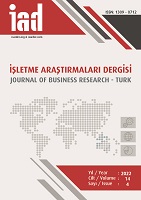
Purpose – With the development of digital technology, digital content marketing sharing has begun to increase its impact in the globalizing world. As social media becoming a part of our life, has been becoming a popular the trendiest marketing activity for brands. In the study, the moderator effect of the marketing activities of the brands on the relationship between consumers' herd behavior and digital content sharing was analyzed. Design/methodology/approach – Thus, a questionnaire was sent to 1544 participants over the age of 18 who use social media and follow any brand/brands on social media. AMOS 24 and SPSS Process programs were used to analyzed the obtained data. Findings – As a result of the study; There seems to be a positive and significant relationship between digital content sharing behavior and herd behavior. It has a moderator role in the relationship of the digital content marketing activity attitudes and behaviors of brands, the information attitude, herd behavior and digital content sharing behavior. Entertainment attitude, which is one of the digital content marketing activity attitudes and behaviors of brands, has a moderating function in the connection between herd behavior and digital content sharing behavior. Reliability attitude, one of the digital content marketing activity attitudes and behaviors of brands, has a moderating function in the relationship between herd behavior and digital content sharing behavior. The financial benefit attitude from the digital content marketing activity attitudes and behaviors of the brands did not have a moderating effect in the relationship of the herd behavior and the digital content sharing behavior. Discussion – In this paper, the relationship between herd behavior and digital content sharing was analyzed, and a significant and positive relationship between herd behavior and digital content sharing behavior has been found.
More...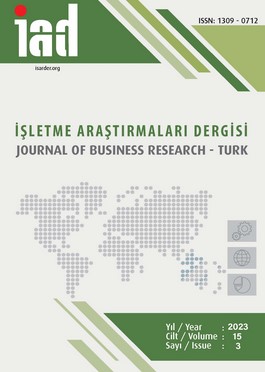
Purpose – This study is an attempt to understand the changes in consumer behavior in the tourism industry related to the pandemic affecting society. This study aimed to evaluate the direct and indirect effects of destination social responsibility (DSR) on the revisit intention of visitors who once visited Turkey before the Covid-19 pandemic breakthrough. Moreover, this research aimed to investigate fear arousal as a moderating effect between tourists' intention of repeat visits and its associated antecedents due to COVID-19. Design/methodology/approach – The research model was examined empirically by targeting 388 tourists from 10 different countries. Structural equation modeling (SEM) was used to analyze the gathered data. Findings –The outcomes of the study demonstrated that DSR is positively and remarkably affected by TS and PV. Also, the results showed that PV has a mediating impact on revisit intention. On the other hand, findings showed that TS has not a remarkable and positive effect on revisit intention. Moreover, the results revealed that FA has a moderation effect on the relationship between DSR-RI, TS-RI, and PV-RI. Discussion – A finding that emerged at the end of this study and contradicted previous studies was obtained. It is a generally accepted phenomenon in the literature that tourist satisfaction has a positive and significant effect on revisit intention. Results show that fear of COVID-19 affects perceived value, tourist satisfaction, and revisit intention differently. Tourist satisfaction and perceived value are undoubtedly two important mediating variables. This contributes to the tourism literature on tourist behaviors.
More...
At the end of the 1920s and the beginning of the 1930s, scientists became interested in the media as a subject of research, and there was also a concrete practical implementation of the technologies of mass media influence in political life. The defining feature of this period was the limitless power of the mass media to influence human behavior through persuasion, and the impetus for such conclusions was given by the successes of the Entente states in the First World War. Also, the targeted influence of the media on the public and the development of the PR system helped not only the American presidents to influence the domestic audience in the USA and beyond, but also the largescale propaganda influence helped A. Hitler comes to power. At the first stage of the study of mass communications and the theory of propaganda, two scientific directions are distinguished: the Chicago school of pragmatism, represented by American researchers, and the Frankfurt school, which was developed by European scientists. Analysis of their research demonstrated the superiority of one-way communication, and the means of mass-communication influence was the power of persuasion, with the help of which the audience was deprived of critical thinking and turned into passive participants in communication. This laid the foundation for the first theories of propaganda, which were effectively used to achieve foreign policy goals by the then leaders.
More...
The present article, by analyzing the documentary material, substantiates that: 1) the completion of the construction of Roki Tunnel (on November 5, 1981) and the opening of Tskhinvali-Java-Roki Road between Georgia and Russia was a factor that strengthened the offensive Ossetian separatism, in particular: a) to give the struggle for the unification of two Ossetias (South and North Ossetia) a new impetus; b) to gradually expel the Georgian population, who hampered the “Ossetian idea”, from Tskhinvali-Java-Roki Road section and subsequent settlement of the vacated areas with the Ossetian population as soon as the favorable situation was created by Ossetian separatists; 2) giving immeasurable rights to governing circles of the Autonomous District of South Ossetia by the government of Soviet Georgia, under the guise of internationalism, created an opportunity for Ossetian separatists to gradually “swallow” Georgian villages of Tskhinvali Region; 3) the documentary material evidences that Ossetian separatists activated by order of the Russian government, by distorting the historical reality, used several forms of ideological and political influence on Ossetian population: a) by using the map drawn by Alan Chochiev, the leader of “Adamon Nihas”, depicting the “settlement” of the Alans, Tskhinvali Region in the South Caucasus was intentionally declared as a historical homeland of the Alans; b) the support of a significant part of Ossetian intelligentsia from Tskhinvali Region of the idea of Chochiev’s idea of unification of “two Ossetias” aimed at creating “evidence that Georgians conquered” Ossetian territory and increased hatred of Ossetians towards them; 4) by the joint efforts of Georgian public opinion representatives and Ossetian intelligentsia (scientists, writers, cultural workers, and students) defending the truth, the following facts were fundamentally justified in printed media: a) it was possible to preserve the cultural and national identity of the Ossetian people through the coexistence of the Ossetians and Georgians within Georgian state; b) strong propaganda to annex “South Ossetia” to North Ossetia aimed at realizing the “hypothesis” of A. Sakharov to demolish Georgia as a “small empire” and contained actions against the territorial integrity of the country.
More...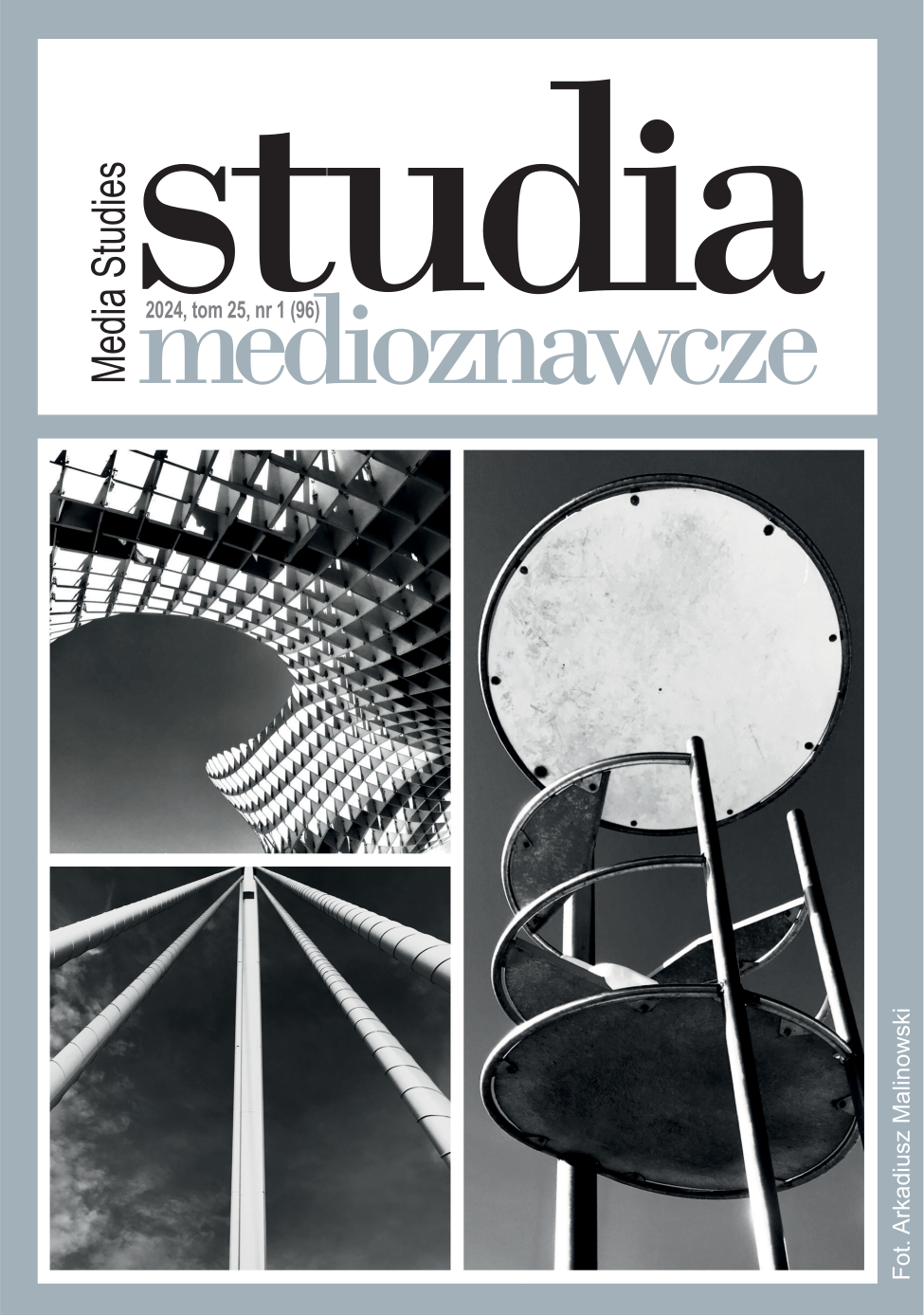
The aim of this article is to present the European Union’s legislative actions regarding media and digital platforms, whose aim is to organize the digital services market and enhance their level of accountability and transparency. A challenge of the current decade is also the necessity to adopt regulatory frameworks in the common market area for artifi cial intelligence technologies. Research method: The text employs a desk research method and legal document analysis. Results and conclusions: In the European Union’s broad media policy, there has been a clear reorientation of actions, marked by media freedom and pluralism, and their role in democracy. The Union also has the opportunity to remain a global creator of regulatory standards for companies in the digital service provider sector. Cognitive value: The article presents current legal solutions in the fi eld of media and digital services, highlighting aspects of transparency, pluralism, and the importance of protecting fundamental rights and democratic values in the context of their activities
More...
The article attempts to present ways of communicating the war crisis from a contrastive perspective. It aims to analyze the front covers of German and Polish weekly opinion magazines published from February/March to the end of 2022, related to the outbreak and enfolding of the war in Ukraine. The study is based on the assumptions of linguistic discourse analysis developed by Walde- mar Czachur (2020). The subject of the analysis are verbal and visual elements of semiotically diverse media texts from comparable institutional broadcasters in Germany and Poland (weekly magazines “Der Spiegel” and “Polityka”) that co-create the war discourse. The analysis is designed to answer the question of how the covers of weekly magazines communicate the war crisis in Ukraine. In the conclusions, similarities and differences between German and Polish media discourse are presented, in which a specific construction of reality takes place, reflecting the content typical of a given culture and the patterns of action and knowledge of a specific community.
More...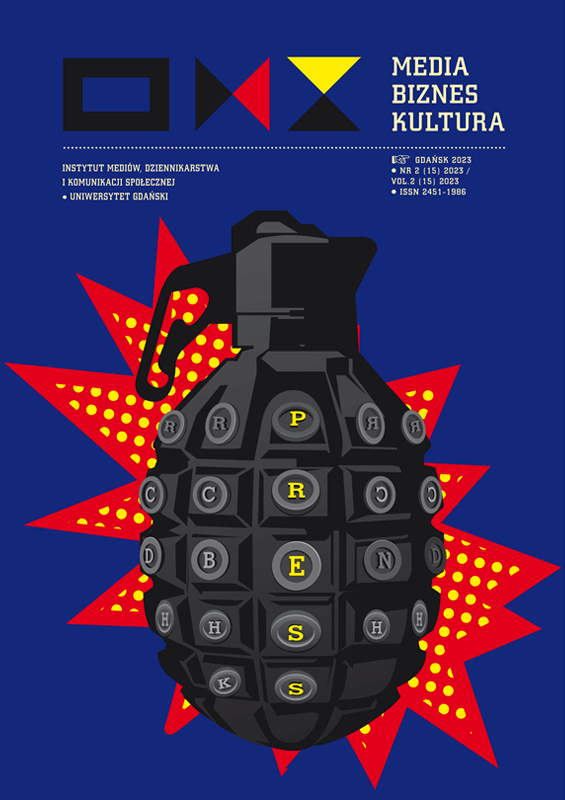
When there were only traditional media such as press, radio or television, communication was structured and predictable. The emergence of social media has not only changed us as users, but has provided completely new opportunities for communication. At the same time, unfortunately, there were threats resulting from the lack of content control, its rapid growth and the impact on the creation and distribution process, which increased the amount of disinformation. These factors have created fertile ground for trolls carrying out disinformation attacks in the form of entertainment publications or hate speech publications. Their role is to ridicule or insult, and their goal is to destabilize the discussion, mislead their interlocutors, and thus damage the good name of a person or group. The article describes the phenomenon of trolling and its relationship with disinformation, focusing on the features, behaviors and effects of such activities.
More...
The role of the media in the context of the crisis is significant: the informational, opinion-forming, educational, conciliatory aspect and potential of the media is known. The media’s exploitation of the crisis is also known: financial exploitation or social polarization. The media as organizations, however, are themselves operating in a permanent crisis and are looking for a strategic response,which they can – and often must – provide. Because no digital-media organization, understood as an organizational entity engaged in the production and distribution of content in the digital space, operates in a vacuum. They operate in a business environment that is nowadays described as turbulent, hostile, hyper-competitive and high-potential. Therefore, there is a need to analyze the environment, which makes it possible, among other things, to identify trends and build a strategic response based on their instrumentalization and prioritization. Trends in the growth phase were analyzed using infuture.institute’s proposed maps and trend cards for 2022 and 2023, relating them to selected digital-media companies: Tinder, Twitch and TikTok. A mapping of selected trends was carried out based on a modified Eisenhower matrix: the urgent-strategic matrix. As a result of the analysis, observations were made observations on the specificity and importance of the strategic response. Some recommendations for long-term action were also formulated. The purpose of the article is to sustain interest in the discussion of the importance of strategic thinking with strategic foresight and anticipation of the future in relation to digital-media organizations.
More...
Copypasta as a genre of an internet texts was born in the first decade of the 21st century in the societies of internet imageboards. Then it expanded the scope of its functioning to social news and social media portals. Due to the fact that copypasta is a heterogeneous genre in aspect of form and content, it’s still evolutioning and it’s located in the borderland of literature, rhetorical forms and other forms of communication, it hasn’t received a scientific operational definition yet. The author of the article, using the research tools of literary studies, rhetoric, netnography and cyber media studies, attempted to characterize copypaste as a separate genre of internet texts, with an emphasis on the determinants of its literariness and rhetoric, and its subordination to communication functions. Usage definitions emphasize two trends which copypasta has evolved into, taking the form of funny stories or simulating a provocative statement in an online discussion as an internet trolling manifestation. The results of the analyzes of texts representing, that the genre indicate its genre similarity to literary forms, e.g. a story, a tale, a blemish; colloquial speech genres, i.e. conversation, gossip and others, as well as rhetorical ones: speeches, appeals, etc. The overriding feature that binds all texts belonging to this genre is their functioning in the virtual web 2.0 space as a kind of verbal meme.
More...
Hate speech, verbal violence, hate and trolling are increasingly common issues that almost every user of the Internet and social media have to deal – often as an observer, sometimes as a victim, and sometimes as a hater indeed. In order to understand the increasingly common verbal aggression in online debates in terms of communication, the authors analyzed a fragmentary, targeted social diagnosis regarding the level of awareness of the phenomenon of hate on the Internet and the effects caused by hate speech that directly affect people. The purpose of the research undertaken is to characterize the phenomenon of hate speech in the consciousness of the online community.
More...
On Sunday, July 16, in Poznań, a 31-year-old perpetrator murdered a 30-year-old man in front of his fiancée. Immediately after the event, short videos and photos from the scene began to be shared on social media, followed by comments from Internet users. The subject of the analysis undertaken by the author are comments that were placed under video materials illustrating crimes posted on Internet portal Sadistic.pl, and especially comments that concern the fiancée of the murdered person. She became a victim of secondary victimization. The trauma she experienced during her fiancé’s murder was prolonged on social media, where hateful comments against her appeared. The analysis undertaken by the author was qualitative and exploratory in nature and will refer to the concept of secondary/double victimization. The author is also in favour used elements of discourse analysis and quantitative content analysis, analyzing the frequency of epithets and types of argumentation used in entries. The author distinguished three types of comments among the videos showing this event: (1) indifferent to the matter, (2) with a negative attitude towards Julia (the murdered man’s fiancée), (3) empathetic –compassionate. The author also discovered that the film about the crime was probably most often shared on Twitter Sadistic.pl. Due to the lack of legal regulations and mechanisms protecting victims of secondary victimization against hate, the author proposed a number of activities involving state institutions and social organizations.
More...
The phenomenon of hate and hate speech on the Internet is affecting a growing population of people and causing serious social, psychological, as well as economic consequences. Public figures, celebrities, and influencers, that is online professionals, are particularly vulnerable to hate. The final professional group in particular is subjected to continuous evaluation by observers. Given the scale and nature of their activities, which are strongly dependent on the opinion of observers, it can be hypothesised that they experience hate and harassment speech to a greater extent than other social media participants. The perspective of determining the scale of hate among Polish influencers makes it possible to gain knowledge to effectively counteract and prevent negative social and psychological effects. The purpose of the article is to describe the effects and strategies of influencers coping with the phenomenon of online hate. The study of influencers used content analysis of media messages and individual in-depth interviews. The results of the survey showed that the majority (more than 94%) of influencers have experienced hate, which most often concerned their appearance and statements. More than 40% of the surveyed influencers have suffered the effects of hate. The cognitive value is the creation of a catalogue of the effects of hate and hate speech affecting a professional group such as influencers, which will significantly translate into knowledge of methods how to counteract the hate and hate speech experienced by Internet users. The development of a catalogue of consequences and strategies for dealing with hate and hate speech will also make it easier to identify the potential impact of internal and external factors that can amplify the phenomenon of hate on the Internet.
More...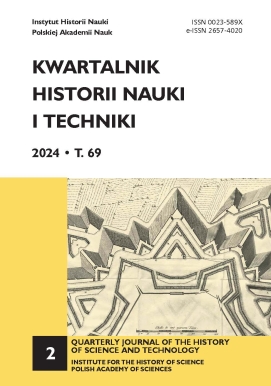
The text considers several critical issues related to the role of false information in the COVID-19 pandemic. It mainly focuses on social media, which often resemble echo chambers responsible for disseminating disinformation. In these echo chambers, users close themselves off from arguments and justifications different from their own, often with a strong tendency towards polarization of views and attitudes. A particular case of echo chambers is the conspiracy mentality propagated in social media, promoting conspirational beliefs about COVID-19, which, besides offering an alternative understanding of reality, deepens distrust towards epistemic authorities and methods of producing scientific knowledge. This indicates an epistemic crisis as a consequence of the pandemic, which must be addressed in order to rebuild and protect epistemic trust. The authors conclude that the consequence of this crisis is a regression of cognitive abilities, which may, in a feedback loop, exacerbate the epistemic crisis.
More...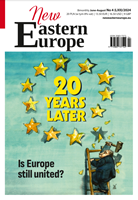
The media landscape in Ukraine has been heavily impacted by the ongoing Russian invasion. While the centralization of media to build a common message and fight disinformation made sense at the beginning of the war, critics now argue that the president’s office is abusing its control of the media while discrediting independent journalists.
More...
In the years 2015-2021, Russia’s rank in Global Terrorism Index became lower every year. In 2015 and 2016, it was classified as third among the European countries, behind Ukraine and France. In the following period (2017-2021), the United Kingdom also found itself ahead of Russia, which fell to the fourth position. The present article has the form of a quantitative analysis. The research goal is to identify trends related to terrorism that take place in the Russian Federation in the years 2015-2022 (in some parts, the analysis covers the time span between 2015 and 2021, due to lack of data). According to the hypothesis: The phenomenon of terrorism in Russia is closely related to the activities of jihadist organizations, and groups with a different profile pose a marginal threat. Quantitative analysis of the attacks conducted in the analyzed period will enable the verification of the hypothesis and determine the prospects for the development of this aspect.
More...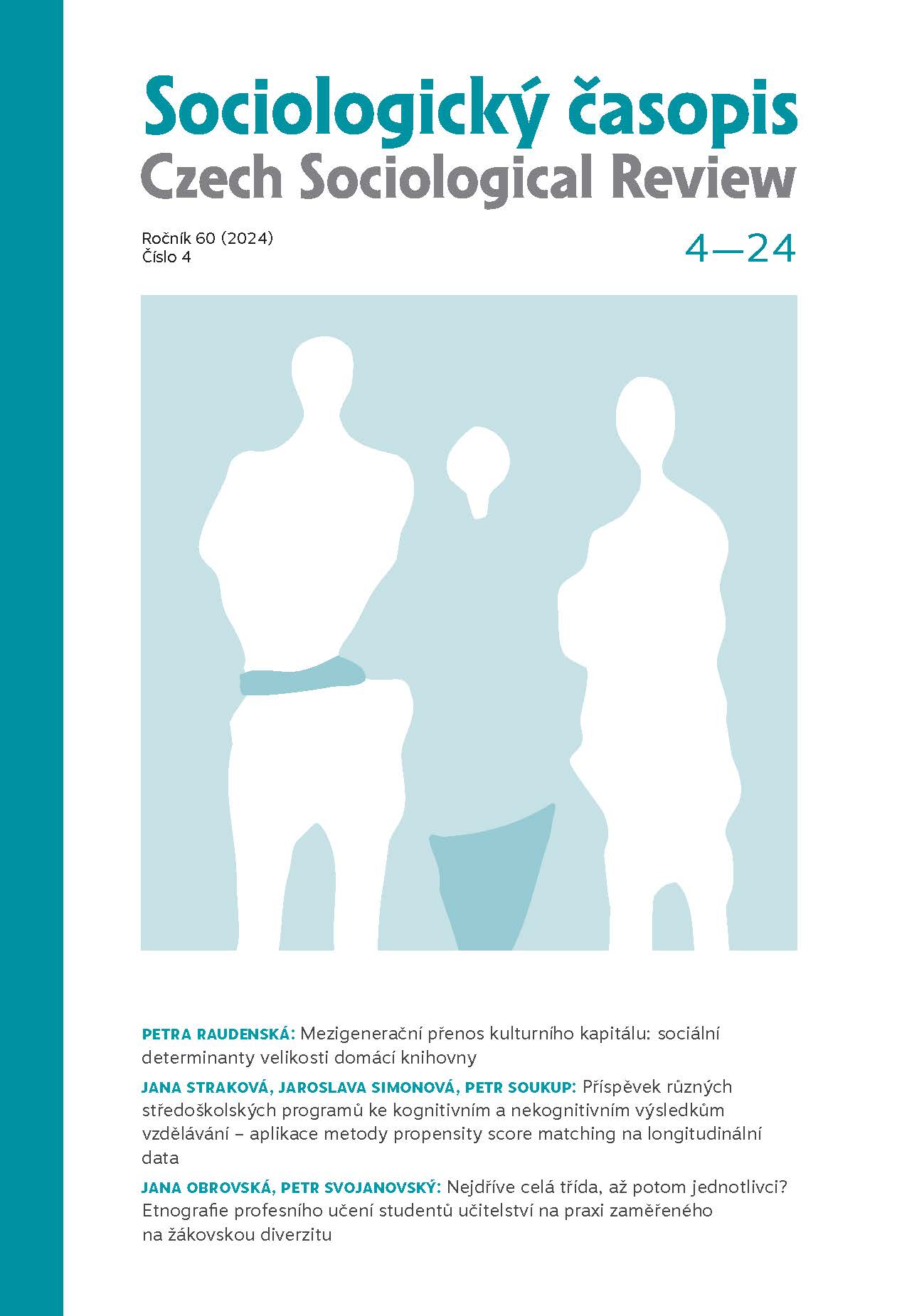
Review of: Elliott, Anthony. Algorithmic intimacy: the digital revolution in personal relationships. First published. Cambridge: Polity, 2023. viii, 204 pages. ISBN 978-1-5095-4980-1.
More...
Since the beginning of the Covid-19 pandemic, the phenomenon known as conspiracy theories started to develop under the uncertainty of what is going to happen next and why we are forced to live in times like that. Meanwhile, researchers tried to develop as soon as possible a vaccine that would mitigate the damage caused by the SARS-CoV-2 virus, and eventually put an end to this pandemic. But, the effort of creating a vaccine is threatened by a vast number of people that tend to reject the idea of vaccination because of distrust in vaccine efficiency, fear related to side effects, the composition of vaccine and so on. What fuels these negative attitudes towards anti-Covid-19 vaccination are the controversies born from conspiracy theories, that tend to be attractive to some categories of people, such as younger individuals, women, people with low-income levels, a low level of education and people from ethnic minorities. In this paper, I tried to capture what are the reasons for people's vaccine hesitancy, and how we can resolve this problem.
More...